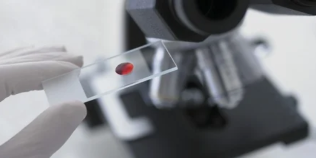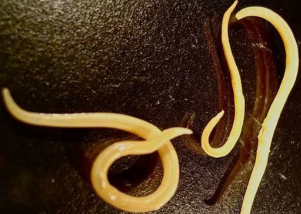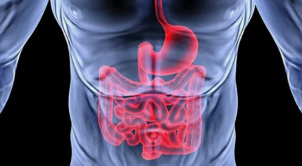Before the beginning of the treatment of parasites, it is important to determine exactly what kind in your body. This is necessary to effective treatments, since most medications designed specifically to get rid of certain types of worms.

Whether the worms protozoa
Sometimes one hears the phrase that the Patient is infected protozoa worms. You need to understand that the easiest way is exclusively single-celled microorganisms, in the extreme case – the organization of the colony. But you are never multicellular as worms, and worms.
The simplest of all processes in the cell cytoplasm and cell nuclei, while the endless the anatomical organization of the screws is much more difficult: they have a differentiated organs, a special physiological function. Therefore, screws expect infinite to be the easiest in a root incorrectly.
Sometimes caused by protozoan parasites called helminths in comparison with the insects: bugs, lice, etc., as the last are on top of the evolutionary ladder. In this Interpretation, the name of the worms, protozoa allowed.
- Symptoms, treatment and prevention of sarcocystosis in humans.
- There are worms in the black color in humans.
- How do the eggs of tapeworms.
The most common parasites
Include the most common endoparasites helminths (worms), which, according to various data, has infected more than 80% of the population of the planet certainly.
A large number of these parasites can be divided into the main types:
- Nematodes – nematodes (roundworms, pinworms, trichina, whip worm, etc.);
- cestody tape-worms (lentetsy, pigs and cattle tsepen, tapeworm, etc.);
- trematody – worms-flukes (liver, blood, lung and tape worms in the gut).
Sometimes you can be divided on the General classification, after the people are all kinds of parasites in:
- translucent (gut) parasites in the intestine;
- Tissue, localized in other organs and tissues.
You are viewing a brief description of the most common types of worms.
Round Worms (Nematodes)
- Roundworm – the most common round worms with a length of 20 to 40 cm, parasitize in the small intestine, but migrate in the human body, by the circulatory and respiratory organs. Together with the intestine, this parasite, bladder, heart and lungs are found in the liver and bile. Common Symptom of Ascariasis – an allergic reaction.
- Pinworms – small worms, up to 1 cm, the stomach, the intestines, and lead to the enterobiasis to work with the disease-bowel, fatigue, sleep disturbances, etc. a Characteristic Symptom of a pinworm itching in the area of the Anus, where they lay eggs.
- Trichinella – this is a microscopically small worms (the size of only a few millimeters) lead to severe diseases – trichinosis, which lead to death if left untreated. Adult species live in the human body, in the muscles (respiratory, face, etc.), causing muscle pain, fever, swelling, allergic skin rashes.
- Whip – small worms (length up to 4.5 cm, with the front part of the body
in the Form of threads), the larvae of which trihozefalez cause diarrhea, acute abdominal pain and other symptoms of appendicitis. Due to intoxication of the organism, an anemia develops.
Tape-worms (cestody)
- A tape-worm, whose body length reaches up to 10 m, leads to the development of difillobotrioza is checked with nausea, weakness, vomiting, unstable chair, asthenia, and anemia.
- Swine tsepen has parasitized a length of 3 to 8 m, mainly in the small intestine and causes two diseases: taeniasis with dyspeptic, asthenoneurotic and abdominal syndromes and cysticercosis with noise, and bowel, allergies, and respiratory syndromes. Depending on the localization tsistitserki homeopathically to muscles, brain, heart, eyes, etc.
- Bullish tsepen, whose length can be up to 18, causing teniarinhoze and is considered to be one of the most dangerous types of tape worms. If you do not do deworming, it can be old to live in the human body for up to 18-20 years! Localized in the large intestine, causes severe poisoning products, as well as diarrhea, nausea, vomiting, abdominal pain, anemia, allergic reactions, and problems with the nervous system.
- Dwarfish tsepen a length of only 1.5-5 cm source hymenolepiasis with the stomach sick, the armbar, and asthenic-neurotic syndrome, from which they are suffering, especially of digestive and nervous System of the body, as well as the liver.
- Echinococcus is considered to be the small tape worm – its length is only 2.5 to 8, rarely 9 mm, but infect it has threatening consequences in the Form of lesions of the liver and the lung, where the cysts and tumors, dysfunction of these organs.
Worms-Flukes (Trematodes)
- Hepatic Fluke, liver or Fluke shape is reminiscent of a leaf is 30-50 mm long and 8-13 mm wide, has suction cups. It damages the shell of the liver and bile ducts clog, is able to completely block the flow of bile. Can addiction cirrhosis, yellow, and liver cancer.
- Cats (Siberian) Fluke, or cat's dvuustka, flat worm, a length of 4-13 mm. Localization – the ducts of the gallbladder, liver and pancreas. Causes opisthorchiasis with the development of Gastritis, ulcer, pancreatitis, cholecystitis until the cancer of the liver, which can lead to death.
- Pulmonary Fluke has an egg-shape, red-brown body with small thorns, with a length of 7.5 to 12 mm and a width of 4-8 mm. The lungs, inflammation affecting, pleural effusion, focal fibrosis, and lung cancer. During penetration in the brain encephalitis and meningoencephalitis caused.
- Schistosoma (blood flukes) – dioecious worms in the size of 1-2 cm, the eggs cause an enlarged liver, spleen, and lymph nodes, formation of polyps in the bowel, diarrhea, granulomatous inflammations of the bladder cancer of the urinary bladder.
The diseases they cause
The most dangerous parasites in the human body, can cause a variety of diseases. Very often suffering, provoked by certain parasites, bears the same name as he. So, different types of parasites in the human body can cause the following diseases:
- certain parasites in humans (flukes) provoke trematodozov;
- the cestodosis caused the defeat of the tape worms;
- if an adult or a child to be in the intestinal roundworms, the nematodes determine;
- Leeches cause hirudins;
- Arctocephalus provoke skrebni.
But the parasites in the human body is not an Organ hit. Depending on the localization of the parasites in the human body such parasitic diseases:
- Eye disease onchocerciasis, demodicosis, cysticercosis, and the myiasis can occur;
- Diseases of the digestive tract, the protozoan parasites and helminths, – Ascariasis, trichinosis, hookworm, enterobiasis, intestinal myiasis, and heterophyes;
- Brain diseases – echinococcosis, toxoplasmosis, alveococcosis, and cysticercosis;
- Dermatological disease, demodicosis, pediculosis, scabies, the pulicosis, trombitas, ftiras;
- Pathology of the lung echinococcosis, Ascariasis, acariasis, alveococcosis, tomingas et Al.;
- Diseases of the liver opisthorchiasis, alveococcosis, echinococcosis, of clonorchiasis;
- In the mouth, in the area of the ears and the mouth cavity parasite of various species of myiasis cause;
- Pathology of the heart and dirofilaria echinococcosis;
- Diseases of the genitourinary system – alveococcosis, urate measy, echinococcosis;
- Pathology of blood vessels – filaretos and schistosomiasis.
Flat Worms
Flat worms are parasites, or flukes (trematodes), have the characteristic shape of the leaf of the body. Structure is enough organized — they have digestive, excretory and nervous system. In the course of the life cycle, the owners changed.
Are widely used such kinds:
- Siberian liverworts (cat's dvuustka), or opistorchis. Most often, the infection occurs through raw fish, which is a pretty dangerous disease — opistorhoza. The multiplication of the parasites occurs very quickly that can lead to serious consequences. The worms have a yellowish tint, and their length can roots to a maximum of 12 m. in the human organism, these parasites internal bleeding provoke, to interfere with the outflow of bile, cause a malfunction of the pancreas. Dangerous: purulent Cholangitis type, ahilii, cholangiocarcinoma.
- Hepatic Fluke. Between the product, the hosts, the representatives of the bovine, and the human is through the consumption of poorly processed meat from diseased animals. As a result of the infection, the disease fascioliasis develops. These worms in the size is relatively small (not more than 5-6 cm), but they are to provoke in the location of dangerous pathology: liver abscess, Cholangitis, Hepatitis. By the blood of the larvae of the parasite can spread throughout the body.
- Shistosoma. The worm is capable of, in the blood vessels, the consumption of blood components. As a result of his life's activity, perhaps the development of varicose veins, tumor formation is. The main Symptom is Intensive General intoxication.

In the human body, you will find a variety of different worms-parasites, either in the various internal organs. They all cause chronic diseases, severe pathology can cause. If there are signs of Helminthiasis, of any kind, contact your doctor for the initiation of an adequate treatment.
Bullish tsepen
Bullish tsepen a length of up to 12 m. This hermaphrodite, which may be more than 100 000 eggs, the feces. The eggs get into the soil, then the plants, these plants eat the cattle. In the body of the animal eggs to larvae localized in muscles. If a Person eats contaminated beef, the larvae reach the intestines. Not transmitted from person to person larvae.
The adult worms have a head with four suckers, neck and body, consisting of segments. The number of nodes is constantly growing, older members.from the worm, and crawl out of the bowels of the people to the outside
Bullish tsepen
The symptoms of the disease are nausea, vomiting, indigestion, increased salivation, dizziness, weakness, nervousness, fatigue, abdominal pain of undetermined localization, allergies, fluctuations of appetite is.
To bullish tsepen from the body, a circuit consisting of 3 phases: the preparation phase (detoxification), treatment of anti-parasitic drugs, recovery (diet, phytotherapy).
Tape-Worms
To include worms, tape type, or the cestodes, a variety of flatworms, of which the length is between 2 mm to 10-12 m. the body of these parasites has a special structure — a number of members, head and neck with suction cups (hooks) that fasten to the walls. The cestode is a hermaphrodite and the eggs are in the segments. Nutrients worm is sucked over the entire surface of the body.
The following are the most common types of tapeworms are:

- Alveococcus. To provoke capable of Cholangitis and abscess, as well as a spread to the spleen, muscle and brain.
- Taenia, or tapeworms. Bullish tsepen stimulates the disease teniarinhoze and is usually in the small intestine. Serious Complications — Cholecystitis, Intestinal Obstruction, Appendicitis. This worm is able to lead to such consequences: atrophy of the intestinal Shell, Glossitis, Günther, leukopenia.
Protozoa Parasites
Toxoplasma (Toxoplazma gondii) – a type of parasite, the most important hosts are cats. Also transported warm-blooded animals and humans can be. The disease, called by Toxoplasma is called toxoplasmosis. Course of the disease easily, with the exception of the damage to the fetus within the uterus in time of pregnancy, this creates serious consequences for the mother and for the fetus, even to the death.
Amoeba simple unicellular organism that has lived on as one of the first creatures on earth. Disease caused by the amoeba, amoebiasis called. Intestinal infection, with a predominantly ulcerative lesions of the colon with the advent of bloody diarrhoea, the possible formation of secondary intestinal lesions, the propensity to chronic leakage.
Malaria-Plasmodium – simple single-cell beings in a cycle of development, the man is a temporary host and mosquito – constant. In the human organism, parasites Plasmodium 4 species:
- P. malarie – the four-Malaria;
- P. vivax — Malaria;
- P. ovale is the three-day ovale Malaria;
- P. falciparum — Malaria Tropica;
The interval duration between eruptions depends on the type of pathogen. Besides all this, anemia develops as Plasmodium infects the white blood cells, the erythrocytes.
Giardia, protozoa, pear-shaped, have two nuclei and four pairs of flagella. The most important source for the pigs and people. Giardiasis — a common disease with a primary lesion of the liver and small intestine. The disease can occur, such as in the light and in the heavy Form.
Trichomonas flagellates are single-celled organisms, pear-shaped, causing the disease Trichomoniasis, sexually transmitted diseases, and beat urinary System. It is noticeable that men and women, but in men the disease is usually asymptomatic.
Trypanosoma – a genus of unicellular protozoa flagellated. Severe disease Trypanosomiasis cause, mortally dangerous for the people with the sleeping disease. Vectors of trypanosomes by bugs are fly, the Tsetse. In the body of the host-parasite multiplies under the skin, then penetrates into the lymphatic system and the blood. Most of the a pathogen is located in the spinal cord and brain, where they destroy cells and produce their toxins.





























